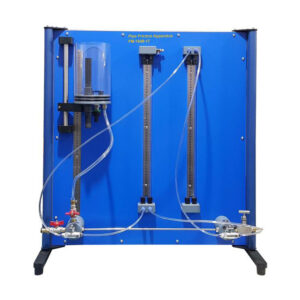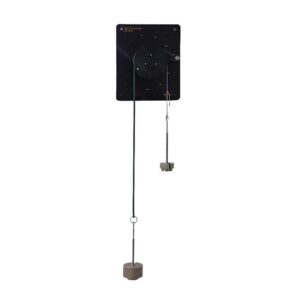This Pipe Surge and Water Hammer Apparatus has been designed for students experiments on the transient effects of pipe surge and water hammer as a result of gradual or instantaneous changes in fluid velocity. The unit consists of two stainless steel pipes connected to a constant head tank. A Hydraulic Bench is supplied with the unit to provide water supply to the header tank and for flow measurements. Surge shaft, control valves and pressure transducers are all supplied with the unit to allow for a range of experiments to be conducted.
The test pipe for surge studies is connected with a clear acrylic surge tank near the downstream end. A manually operated control valve is provided for students to create the surge. A pressure transducer is fitted at the base of the surge shaft to provide surge single to be detected by an oscilloscope. Students will be able to examine the maximum surge height and also monitor the time from the valve closure to maximum surge using a stopwatch. The test pipe for water hammer studies includes a push release valve or solenoid valve (optional) and also a pair of pressure transducers fitted near each end of the pipe. The water hammer effect is achieved by pushing and releasing the valve or activating the soleniod valve (optional) and the passage of the acoustic wave past both transducers will be shown on oscilloscope.




